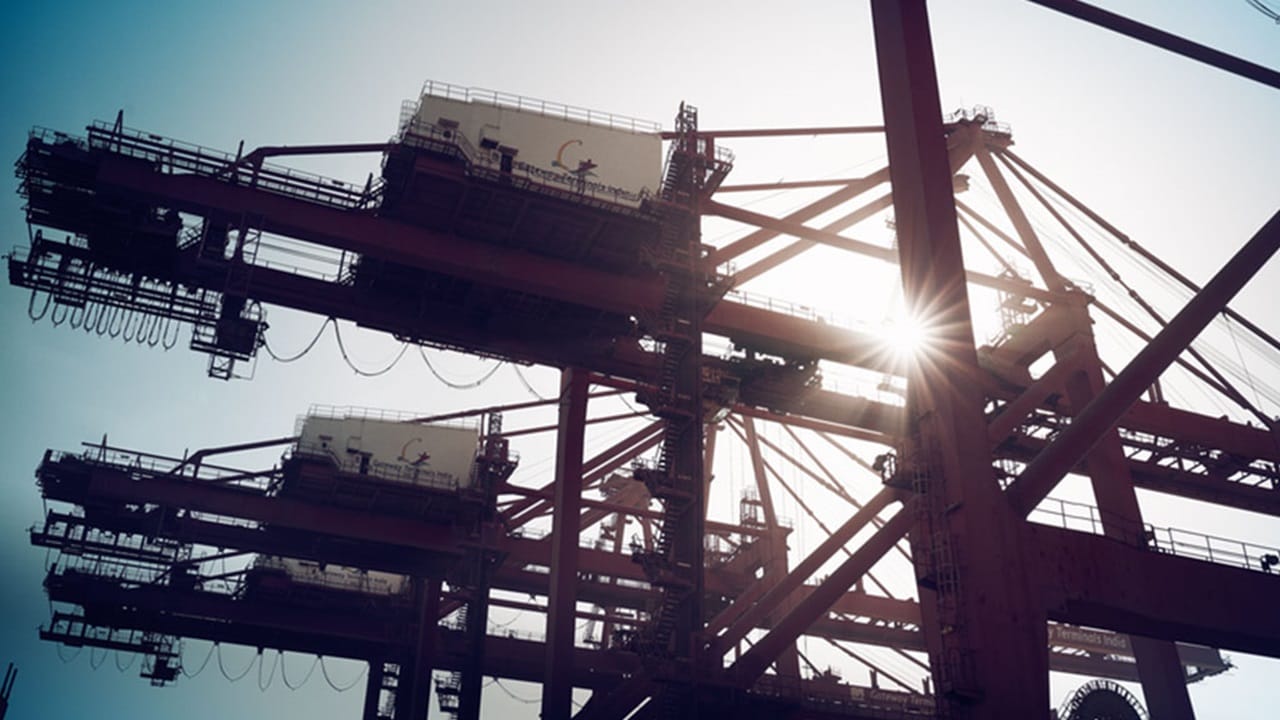The growing sophistication of digital twins is creating new opportunities in logistics to streamline operations, build resilience and improve sustainability.
The concept of digital twins is not new, but its application to logistics has been gradual. The idea of creating a virtual copy of a physical object to study its real-world counterpart first emerged in the 1960s. The term ‘digital twins’ came about in the early 2000s along with its first application to manufacturing. Since then, the necessary technologies continued to evolve and have now reached a point where digital twins can be applied effectively to logistics.
So, what is a digital twin and how does it work? A digital twin is a digital representation of an ‘asset’, which can be an object, process, or system. It uses real-time data (often collected by sensors), historical data, and machine learning to mirror the real-world version’s functionality and status and predict future states. Machine learning is a type of artificial intelligence (AI) that allows software applications to become more accurate at predicting outcomes, without need to be explicitly programmed to do so.
Digital twins are enabled by technologies including:
- Internet of Things (IoT) – this system of connected devices and networks makes it possible to collect large volumes of data from a wider range of sources
- Cloud computing – provides the ability to store and access data and computing sources over the internet
- Augmented, mixed and virtual reality – offers the spatial models and visualisations of the digital twin and allows for collaboration and interaction within it
- Artificial intelligence – uses historical and real-time data, as well as machine learning, to model and validate hypotheses
Digital twins have huge potential to help design, visualise, monitor, optimise, and maintain assets more effectively. The Institute of Electrical and Electronics Engineers (IEEE) says digital twins are now one of the most promising technologies linked to Industry 4.0 (the current era of connectivity, automation, advanced analytics, and advanced manufacturing). Today, the global digital twin market has reached a value of over USD 5 billion, according to market research group Fact.MR. By 2033, it is expected to be worth USD 95 billion, representing an impressive compound annual growth rate (CARG) of 34%.
Here are four ways supply chain digital twins will transform logistics.
1. Optimising layout and design at every stage of the supply chain
The digital twin allows for existing and new processes to be modelled, explored, and tested – without ever needing to make any changes in the real world. Taking for example a warehouse, a digital twin can test the addition and interaction of different technologies and software. This can include robots, counting systems, and automated storage and retrieval systems. The digital twin can draw on information from sensors and data from simulations. It can test and improve the layout of the physical warehouse, refining and optimising its operation. It can identify and remove inefficiencies and optimise the working of the warehouse. The digital twin can also be used where a physical or real-world asset does not yet exist. For example, if a new truck is in planning, a digital twin can help validate every aspect of its design and operation, long before the building begins. The same can be applied to other assets like buildings, planes, trains and last-mile delivery. McKinsey estimates that digital twins can help increase revenue by 10%, accelerate time to market by up to 50%, and improve product quality by as much as 25%.
2. Being prepared for anything with digital twin solutions
To date, logistics has relied largely on descriptive analytics (explained by Harvard Business School as ‘what happened?’) and, to an extent, diagnostic analytics (‘why did this happen’?). Digital twins can facilitate predictive analytics (‘what might happen in future?’) and prescriptive analytics (‘what should we do next?’). In other words, digital twins can help move from being reactive to proactive. They can dramatically improve the quality of decision-making and supply chain planning.
Disruptions to the supply chain, plus new challenges emerging in 2023, have highlighted the importance of building resilience and be prepared for everything. Digital twin technology enables ‘what if?’ scenario planning and ensure the supply chain is equipped to withstand any disruption – whether it is the result of bottlenecks, raw material shortages, weather events or something else. A digital twin can be used to conduct virtual stress tests to see how the asset holds up in different scenarios. It can be used to test different responses, helping identify and develop the best approaches. This is quicker and cheaper than running a real-world stress test and allows for endless simulations until the responses are perfected.
Digital twins also facilitate better cooperation and collaboration. They can help bring decision-makers together to evaluate the results of the simulations to reach a collective decision.
3. Switching to predictive maintenance and repair
Digital twin technology can also help move towards predictive maintenance. Businesses benefit from essential equipment operating at peak efficiency. To date, many businesses relied on either corrective maintenance when an issue arose or preventive maintenance where they estimated the life cycle of individual parts and conducted maintenance before a failure.
Sensors can feed data to the digital twin on the asset’s condition, performance, and damage. The digital twin can allow simulations to foresee faulty scenarios, analyse maintenance workflow and test all possible faults. Instead of reacting to machinery breaking down, digital twins proactively deal with maintenance so assets can be repaired in as part of a more convenient and optimised timelines, and not when it can disrupt flow and interrupt the supply chain.

4. Improving sustainability thanks to digital twins
Digital twins solutions can also help reduce the environmental impact and make supply chains more sustainable. According to a recent survey by Oxford Economics, this is a goal for 73% of company executives worldwide.
Forbes says that digital twin logistics ‘might just save the planet’, pointing to their role empowering a circular economy. The circular economy, as explained by the United Nations (UN) is focussed on reusing and keeping products, materials, and services in circulation for as long as possible. Digital twins can help figure out how to use resources more efficiently, without needing to generate waste in real-life.
Digital twins can also help visualise and decipher trade-offs between environmental factors, efficiency, and cost. They can enable shippers to simulate different routes or modes, allowing for a better understanding of the carbon footprint the different paths may generate. For example, routes can be simulated to avoid peak traffic times in urban areas or use a less popular route that provides for a smaller carbon footprint. Similarly, it can help determine what stock levels in a warehouse are sufficient, reducing the waste generated by oversupply.
A tipping point thanks to digital twin technology?
Implementing digital twins is a complex and challenging endeavour that requires matching complex assets and their behaviour in a digital environment, with precision and in real-time. It is also important to note that a digital twin is heavily reliant on quality data at every stage of the supply chain – good data in, good decisions out.
Nonetheless, digital twins come with significant benefits that will increasingly outweigh the costs and challenges as time and technology progresses. Their ability to increase reliability, efficiency and resilience help explain why the interest in and demand for supply chain digital twins is accelerating. Meanwhile, cheaper data storage and computing power, the availability of robust, highspeed wired and wireless networks, and cheap, reliable sensors, will bring us closer to the tipping point for widespread adoption. And, once that tipping point is reached it will open up a whole new world of opportunity for logistics.
未来,您想随时了解必读行业趋势吗?
您已经完成了,欢迎“登船”!
很抱歉,发送您的联系请求时出现问题。
请查看表单字段,确保所有已正确填写所有必填信息。如果问题仍然存在,请联系我们的支持团队以获得进一步的帮助。
未来,您想随时了解必读行业趋势吗?
使用此表格注册,即可直接在您的邮箱中接收我们的洞察见解,进入一个真正的综合物流世界。简单操作,即从我们为您量身定做的精选文章中获得启发,了解相关行业洞察信息。您可以随时取消订阅。













